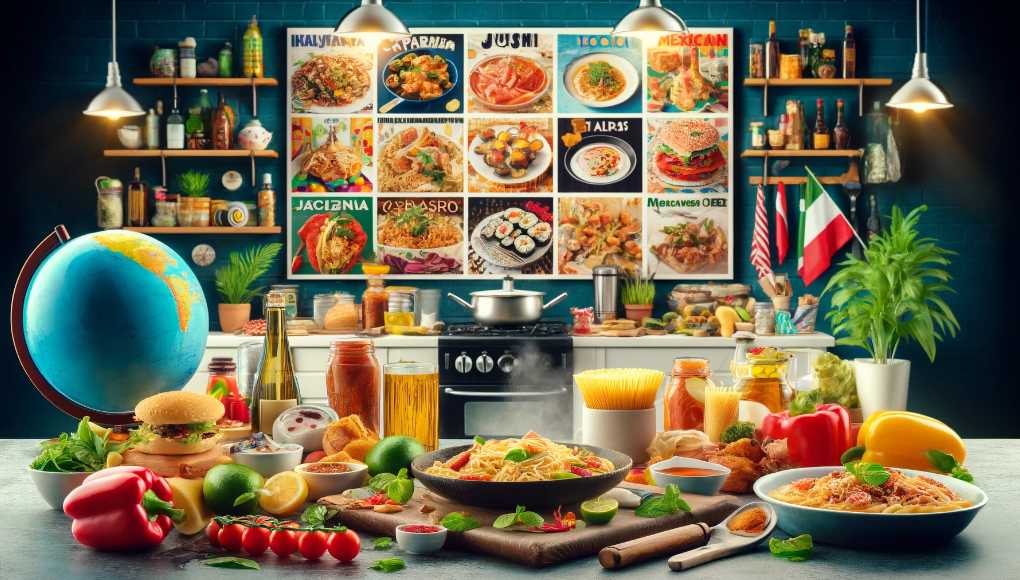異なる文化や風味を家庭で楽しみたいと思いませんか?国際料理を英語で学ぶことは、その国の文化や歴史を深く理解する素晴らしい方法です。異国の料理を作ることで、食材や調理方法を学びながら、ビジネス英語のスキルも自然に向上させることができます。本記事では、家庭で楽しめる英語での国際料理レシピを紹介し、各料理の文化的背景や英語表現について詳しく解説します。さあ、英語で国際料理を楽しみましょう!
第1章: 主要な国際料理レシピの紹介
イタリアのパスタ: スパゲッティ・カルボナーラ
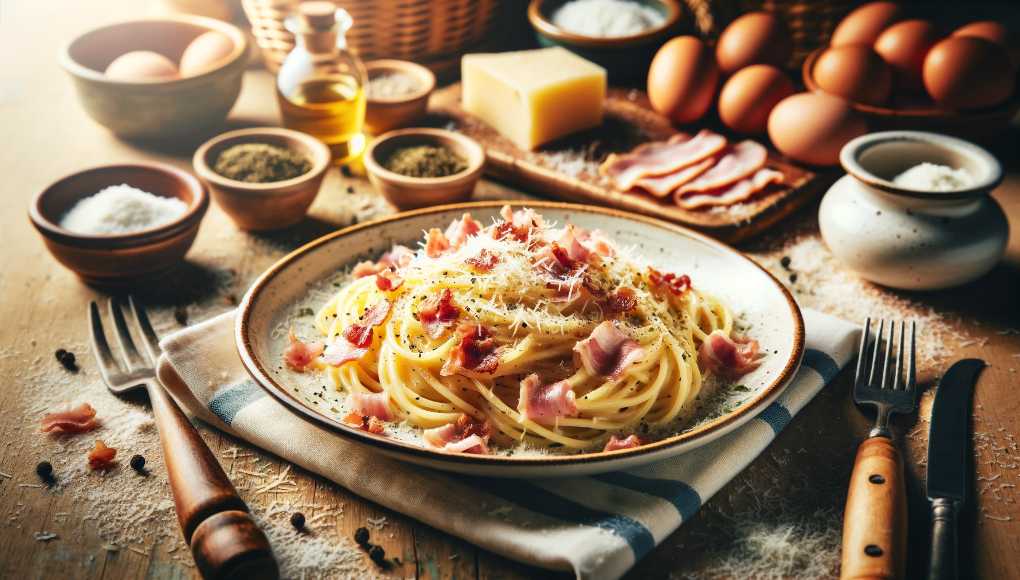
レシピ: スパゲッティ・カルボナーラ
基本的な英語表現:
- Ingredients(材料): eggs(卵), Parmesan cheese(パルメザンチーズ)または Pecorino Romano(ペコリーノ・ロマーノ), pancetta(パンチェッタ), spaghetti(スパゲッティ)
Ingredients(材料):
- Eggs(卵): 2 large
- Parmesan cheese(パルメザンチーズ)または Pecorino Romano(ペコリーノ・ロマーノ): 1/2 cup grated
- Pancetta(パンチェッタ): 100g
- Spaghetti(スパゲッティ): 200g
- Salt(塩): to taste
- Black pepper(黒胡椒): to taste
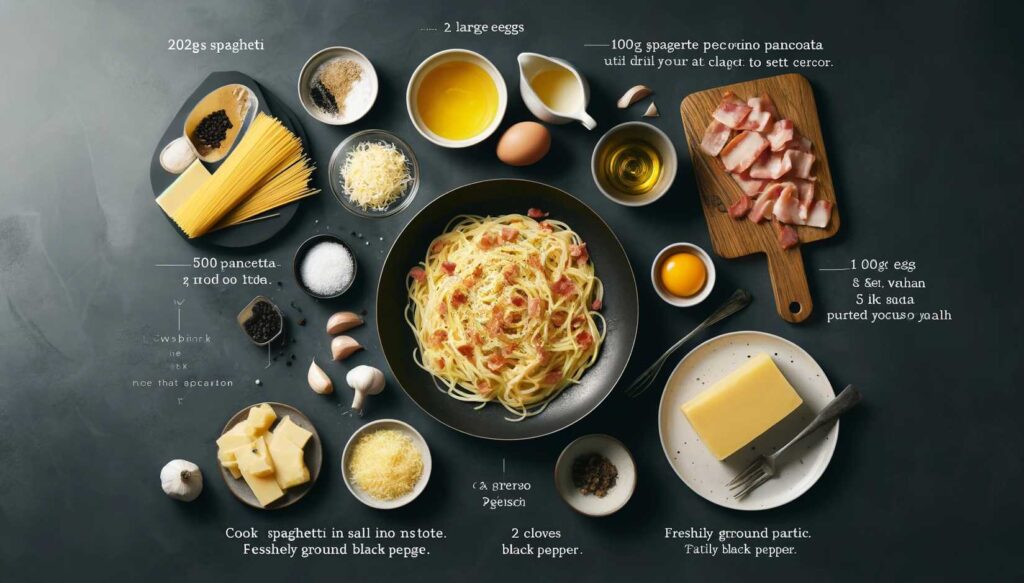
Cooking steps(調理手順):
- Boil(茹でる): 大きな鍋に塩水を沸騰させ、スパゲッティを加えてアルデンテに茹でます。
Bring a large pot of salted water to a boil. Add the spaghetti and cook until al dente. - Fry(炒める): 大きなフライパンでパンチェッタをカリカリになるまで炒めます。
In a large pan, fry the pancetta until it becomes crispy. - Mix(混ぜる): ボウルで卵を溶き、パルメザンチーズまたはペコリーノ・ロマーノと混ぜ合わせます。
In a bowl, beat the eggs and mix with grated Parmesan cheese or Pecorino Romano. - Combine(組み合わせる): パスタを湯切りし、パンチェッタの入ったフライパンに加えます。火を止め、素早く卵とチーズの混合物をかき混ぜます。
Drain the pasta and add it to the pan with pancetta. Remove from heat and quickly stir in the egg and cheese mixture. - Serve(提供する): 塩と黒胡椒で味を調え、すぐに提供します。
Season with salt and black pepper, then serve immediately.
メキシコのタコス: チキンタコス
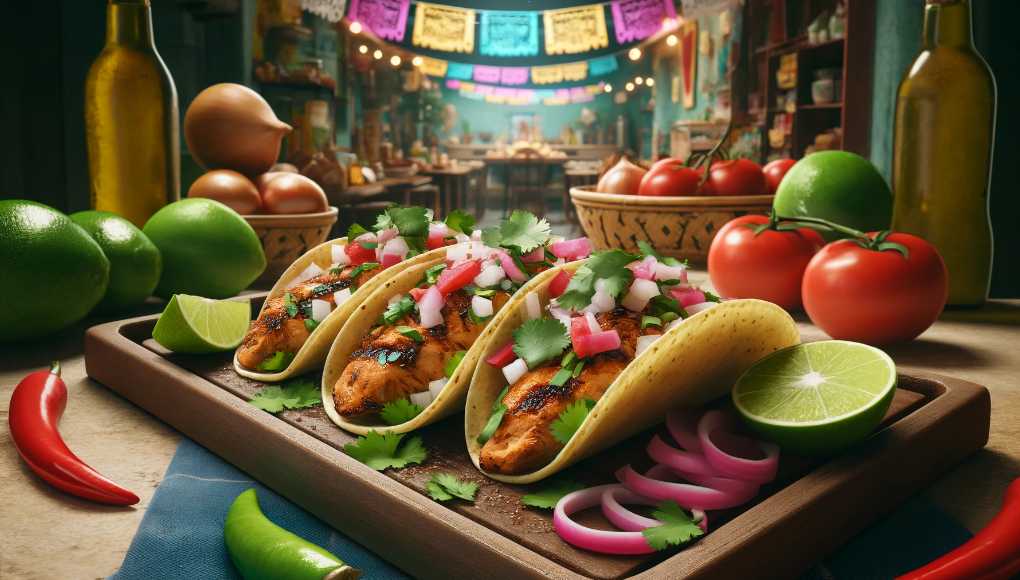
レシピ: チキンタコス
基本的な英語表現:
- Ingredients(材料): chicken(鶏肉), tortillas(トルティーヤ), salsa(サルサ), avocado(アボカド)
Ingredients(材料):
- Chicken breast(鶏むね肉): 2 pieces
- Tortillas(トルティーヤ): 4
- Salsa(サルサ): 1 cup
- Avocado(アボカド): 1, sliced
- Lime(ライム): 1, cut into wedges
Cooking steps(調理手順):
- Grill(グリルする): 鶏むね肉をグリルで完全に火が通るまで焼き、小さく切ります。
Grill the chicken breasts until fully cooked, then chop into small pieces. - Warm(温める): トルティーヤをスキレットまたは電子レンジで温めます。
Warm the tortillas on a skillet or in a microwave. - Assemble(組み立てる): トルティーヤに鶏肉、サルサ、アボカドのスライスをのせます。
Place the chopped chicken, salsa, and avocado slices on each tortilla. - Garnish(飾る): ライムウェッジを添えてすぐに提供します。
Garnish with lime wedges and serve immediately.
日本の寿司: 巻き寿司
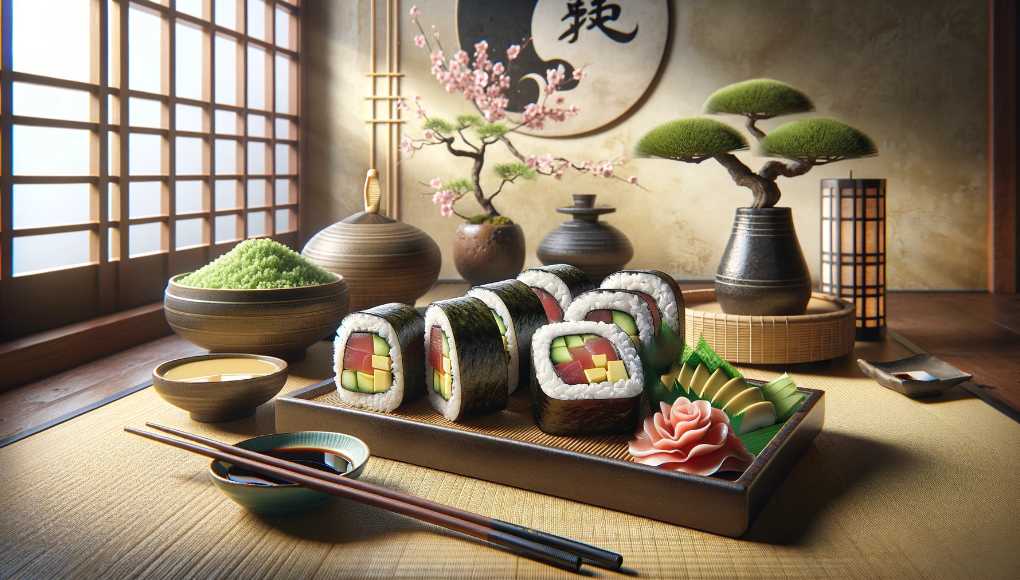
レシピ: 巻き寿司
基本的な英語表現:
- Ingredients(材料): sushi rice(寿司飯), nori (seaweed)(のり), raw fish(生魚), cucumber(きゅうり)
Ingredients(材料):
- Sushi rice(寿司飯): 2 cups cooked
- Nori (seaweed)(のり): 4 sheets
- Raw fish(生魚): 200g, sliced
- Cucumber(きゅうり): 1, julienned
- Soy sauce(醤油): for dipping
Cooking steps(調理手順):
- Prepare(準備する): 寿司飯を準備するために、1/4カップの酢、大さじ2の砂糖、小さじ1の塩を温めて混ぜ、炊きたてのご飯2カップに混ぜ込みます。
Prepare the sushi rice by warming and mixing 1/4 cup of vinegar, 2 tablespoons of sugar, and 1 teaspoon of salt, then mixing it into 2 cups of freshly cooked rice. - Roll(巻く): 竹巻きすにのりを置き、寿司飯を広げ、生魚ときゅうりを加えます。
Place a sheet of nori on a bamboo mat, spread sushi rice on it, and add the sliced fish and cucumber. - Slice(切る): のりをしっかり巻き、一口大に切ります。
Roll the nori tightly and slice into bite-sized pieces. - Dip(つける): 醤油を添えて提供します。
Serve with soy sauce for dipping.
インドのカレー: チキンカレー
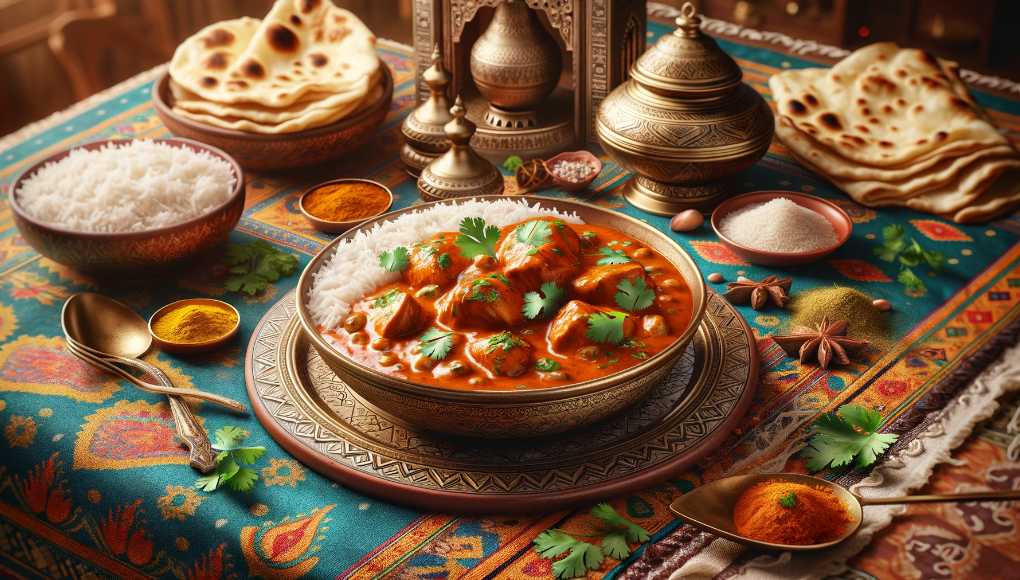
レシピ: チキンカレー
基本的な英語表現:
- Ingredients(材料): chicken(鶏肉), curry powder(カレーパウダー), coconut milk(ココナッツミルク), spices(スパイス)
Ingredients(材料):
- Chicken(鶏肉): 500g, cut into pieces
- Curry powder(カレーパウダー): 2 tbsp
- Coconut milk(ココナッツミルク): 1 cup
- Onions(玉ねぎ): 2, finely chopped
- Garlic(にんにく): 2 cloves, minced
- Ginger(生姜): 1 tsp, grated
Cooking steps(調理手順):
- Sauté(ソテーする): 大きなフライパンで玉ねぎ、にんにく、生姜を黄金色になるまで炒めます。
Sauté the onions, garlic, and ginger in a large pan until golden brown. - Add(加える): 鶏肉を加え、ピンク色が消えるまで炒めます。
Add the chicken pieces and cook until they are no longer pink. - Simmer(煮る): カレーパウダーとココナッツミルクを加え、20分間煮込みます。
Stir in the curry powder and coconut milk, then let the mixture simmer for 20 minutes. - Stir(かき混ぜる): 時折かき混ぜてカレーが鍋にくっつかないようにします。
Stir occasionally to prevent the curry from sticking to the pan. - Taste(味見する): 塩で味を調え、熱いうちに提供します。
Taste and adjust the seasoning with salt if needed, then serve hot.
第2章: 料理の文化的背景
イタリアのパスタ
歴史と文化(History and Culture):
- パスタはイタリア料理の中心的な存在で、紀元前4世紀にはすでに存在していたと言われています。
- パスタの種類は600以上あり、地域ごとに異なる形や調理法があります。
- スパゲッティ・カルボナーラは、第二次世界大戦後にアメリカの兵士が持ち込んだベーコンと卵を使った料理として知られていますが、ローマの炭焼き職人が好んで食べたことに由来するという説もあります。
英語での文化解説(Cultural Explanation in English):
- Pasta is a staple of Italian cuisine, believed to have been present since the 4th century BC.
- There are over 600 types of pasta, each with unique shapes and preparation methods that vary by region.
- Spaghetti Carbonara is known to have originated after World War II, using bacon and eggs introduced by American soldiers, but another theory suggests it was favored by charcoal workers in Rome.
メキシコのタコス
歴史と文化(History and Culture):
- タコスは古代メキシコのアステカ時代に起源を持ち、トルティーヤは当時から主食として食べられていました。
- タコスは移動中に手軽に食べられる食べ物として発展し、現在ではメキシコのストリートフードの象徴となっています。
- 北部では牛肉が一般的ですが、南部では魚や豚肉がよく使われます。地域ごとに異なるスタイルがあります。
英語での文化解説(Cultural Explanation in English):
- Tacos have origins in ancient Mexico during the Aztec era, with tortillas being a staple food.
- Tacos evolved as a convenient food to eat on the go and are now a symbol of Mexican street food.
- In the northern regions, beef is commonly used, while in the southern regions, fish and pork are more prevalent. Each region has its own unique style.
日本の寿司
歴史と文化(History and Culture):
- 寿司の起源は保存食としての魚の漬け込みに遡りますが、現代の握り寿司の形態は江戸時代に形作られました。巻き寿司も同様に江戸時代から一般的に食べられるようになりました。
- 寿司は地域ごとに異なるスタイルがあり、関西では押し寿司、関東では握り寿司が一般的です。
英語での文化解説(Cultural Explanation in English):
- The origins of sushi date back to preserving fish by fermenting it with rice. Modern nigiri sushi took shape during the Edo period, and maki sushi also became popular during this time.
- Sushi styles vary by region, with oshizushi (pressed sushi) being common in the Kansai region and nigiri sushi in the Kanto region.
インドのカレー
歴史と文化(History and Culture):
- カレーはインドの伝統的な料理で、数千年にわたる歴史があります。地域ごとにスパイスの使い方や調理法が異なります。
- 北インドのカレーはクリーミーでリッチな味わいが特徴であるのに対し、南インドのカレーはココナッツやタマリンドを多用し、スパイシーで酸味のある風味が特徴です。
英語での文化解説(Cultural Explanation in English):
- Curry is a traditional Indian dish with a history spanning thousands of years, with variations in spice usage and preparation methods across regions.
- Northern Indian curries are known for their creamy and rich flavors, while southern Indian curries often use coconut and tamarind, making them spicier and tangier.
第3章: まとめ
国際的な料理レシピを学ぶことは、異なる国の美味しい料理を楽しむだけでなく、その国の文化や歴史、そして言語に対する理解を深める素晴らしい方法です。本記事で紹介したポイントを再確認し、ぜひ次のアクションプランを実践してみてください。
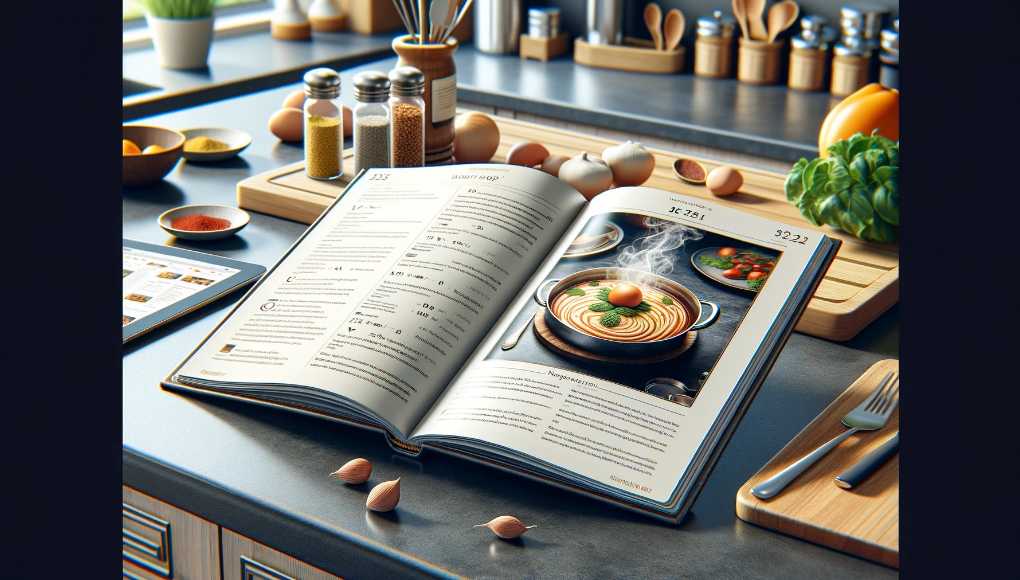
国際料理の魅力を再確認
- 異国の味を家庭で楽しむ
- 料理を通じて文化や歴史を学ぶ
- 料理スキルの向上
英語でレシピを学ぶことの利点
- ビジネス英語のスキルアップ
- 食材や調理器具、調理手順に関する英語表現の習得
- 実践的な英語学習
具体的な実践方法
- レシピを英語で読む
- 食材や調理法を英語で覚える
- 料理動画を視聴する
日常に取り入れる
- 週末に国際料理を作るイベントを開催
- SNSでレシピを共有
- 料理教室やクラブに参加
料理を楽しみながら英語力も向上させましょう。次にどの料理に挑戦しますか?ぜひコメントで教えてください!

